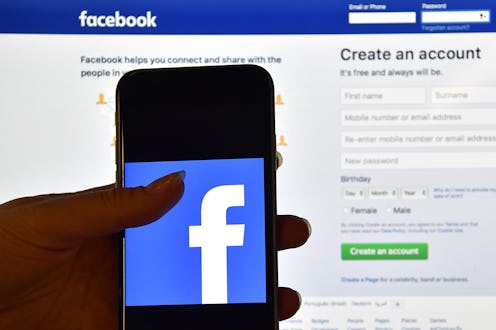News
Facebook's Trying To Replicate This App, Again
Last year, Mark Zuckerberg awkwardly failed to buy Snapchat for $3 billion, so he's doing what any normal person would do: He's had Facebook create a newer, better Snapchat, named "Slingshot." It's intended to directly rival Snapchat, proving once and for all that Zuckerberg really doesn't handle break-ups well. Slingshot follows Facebook's failed attempt to launch a similar Snapchat-esque app, "Poke," which was discontinued earlier this month after poor App Store performance.
Facebook hasn't officially confirmed that they're working on the app, but the Financial Times reported Sunday that the app could be launched as early as this month, citing sources familiar with the app's development. Slingshot will let you create short video messages, and will reportedly work a lot like the app TapTalk, which lets users tap a friend's profile picture to quickly send a photo of video that is deleted after being seen.
Facebook's obsession with the video and photo messaging application makes sense — recent studies show that Facebook is out and Snapchat is in among teenagers. Plus, Snapchat's newly added text and video chat feature doesn't make it any easier for Facebook to catch up.
So, what exactly would Zuckerberg's Slingshot have to include to win back teens from Snapchat? Well, Snapchat is fundamentally flawed in that it's designed for short-term usage: the photos and videos delete themselves — at least supposedly — after the user looks at them. So here are three ways that Slingshot can use Snapchat's downfalls to its advantage...
1. Let users save the snaps with permission
With the user's permissions, Slingshot could let you save the photos and videos beyond the simple screenshot. Sure, this goes against the fundamental principal and allure of Snapchat, but would engage users in the application beyond the 10 seconds of video of photos.
2. Measure and Celebrate Progress
People yearn for positive affirmation, so why not give it to them? Simple messages like "Congrats on your 50th message!" would allow people to drive themselves to use the app more often. Apps like Draw Something and Foursquare utilize this tactic, so why can't Slingshot?
3. Allow users to "follow" others
If Slingshot allows users to follow and "discover" other users with similar interests — much like Twitter does — then more Slingshot users may be engaged with the app in the long term. Users don't have to send messages to everyone they follow — just like they don't have to respond to people on Twitter — but building a valuable following through whatever Slingshot's version of a Snapchat story will be makes it harder for users to abandon the app after a few months.
If Zuckerberg uses these tactics, he shouldn't find himself groveling over his break-up with Snapchat with a rom-com marathon and a pint of Ben & Jerry's — hopefully.
Image: Sony Pictures
